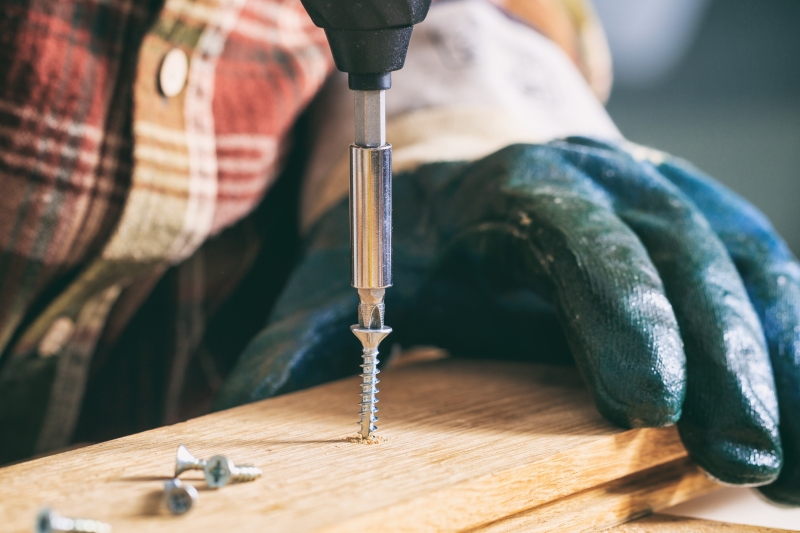
© Rawf8 / Adobe Stock
Professional Builder speaks with Chris Middleton, General Manager of the Construction Fixings Association, on why fixing best practice is important.
For the latest episode of the Professional Builder Podcast, we sat down with Chris Middleton, General Manager of the CFA, who has over 30 years of experience running fixings and fastening companies, to find out why best practice is important and common mistakes for tradies to avoid.

Making the right choice
Thinking about best practice with fixings, it’s easy to jump straight to how the things are actually being installed on site. Chris stresses that the discussions around fixings and fastening on site have to begin before then.
He explains “We estimate that upwards of 50 % of all fasteners are incorrectly applied. It’s a big number, but this really starts with making sure you’ve selected the right fixing for the application.
“Then, you go on to installation and proof testing. What we try to do at the CFA is make sure not only the products are specified to ETA (European Technical Assessments) or UKTA (United Kingdom Technical Assessment) standards but also the people installing them and proof testing them are fully trained and certified.”
Indeed, seemingly small choices when at work, whether it’s building an extension or hanging up a shelf, can have big consequences down the line. Chris uses the example of wall ties in housebuilding.
“If we take the simplest house building, for instance, we find that in a simple wall tie, people are putting a carbon steel wall tie into a cavity where it should be stainless, and it should be an austenitic stainless rather than a martensitic stainless. It’s fine, it holds the wall, but in 10 years time, it won’t, it will have corroded. Now, it passes the inspection because it’s buried in a cavity and it’s almost goes unnoticed and uninspected at that time. People get away with these things and down the line, they find that they’ve got a warranty issue in 10 years because the walls are starting to bow out.”
Building safety
Warranty issues aren’t the only factors at play here either. The trades often get a bad rep in the UK, so anything to challenge this is a bonus. Safety is also a huge consideration too, with potentially catastrophic repercussions.
“Too many times, and Grenfell is a typical example if you read the report, companies or contractors change the specification or put in a fixing or fastener that they deemed to be similar, but obviously don’t conform fully. Then what you get there, especially within a system, is lots and lots of different products, all very close to the specification, which means the actual assembly is out of specification and you get disasters.” Chris explains.
“I could name lots of instances up and down the country where the CFA has been asked to go in and give an independent view of what’s gone on and what’s failed. We see failures in construction all the time and really our job within the CFA is to make sure that we lift the standards of people selecting the products and lift the standards of people installing them.”
While high rise blocks like Grenfell aren’t the usual property for an average jobbing builder, the events there represent the larger problems associated with fixings and fastenings. There is still the potential for injury or casualty in the smallest of installations.
Common mistakes
Chris elaborates on whether there’s common mistakes he’s seen in his experience in the industry. “Not using setting tools on drop in anchors is a classic. Wall ties, as I said, not using stainless, particularly austenitic stainless steel wall ties is another classic. Putting fixings in too close to the edge of concrete and cracking.
“I’ve got a whole gallery of rogue installations that I could call on. So yeah, there’s some common things like not using drills that are regulated, not getting a round hole, not cleaning holes out correctly in concrete lack of embedment depth, hitting rebar.
“You’d be amazed at how many people drill a hole and then don’t get the dust out the bottom. They’ve said, well, I’ve drilled it to the correct depth, but actually the bottom 20 centimetres is completely packed in!”
Help and guidance
Thankfully, these common mistakes (and less common ones!) need not be made on-site. The CFA website is host to a vast wealth of resources which are available free of charge. Guidance notes, installation videos, method statements, building regulations and technical articles are all available as well as a technical team that’s happy to help with any technical queries. Paid training courses are available too in-person or online.
Chris summarises “At the CFA, we cover everything from putting a washing line up to a nuclear power station. So, there’s slightly different tensile tests and stress tests needed on both of those, but we do cover all the aspects!”
For more information on the CFA visit the-cfa.co.uk.
Listen to our full interview with Chris below







